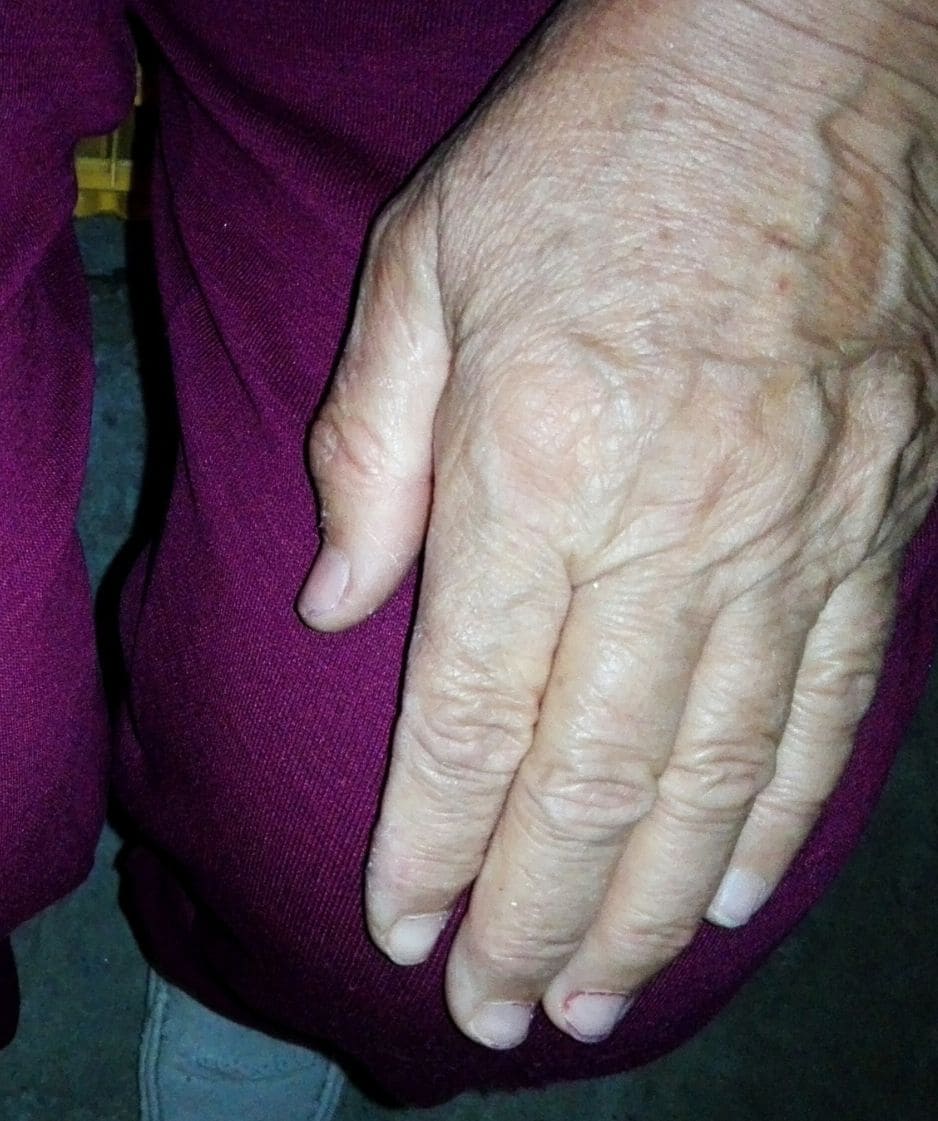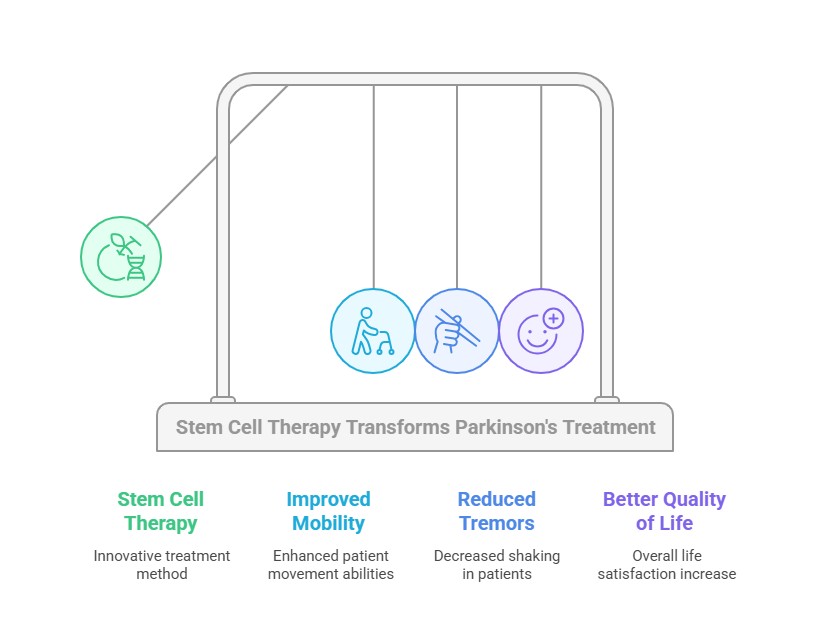

Regencord Pereira’s Parkinson’s disease stem cell therapy boasts impressive results—a 90% positive outcome rate from treating over 5,376 patients worldwide. The innovative medical center has been at the vanguard of stem cell therapy for Parkinson’s treatment for more than 11 years without any serious adverse events.
The center's specialists bring over 30 years of combined expertise in genetics, biotechnology, and pharmacology. They have made substantial progress in treating neurological conditions of all types, including this neurodegenerative condition. Parkinson's patients can find affordable stem cells for treatment options here, with costs between $7,000 and $14,000—much lower than treatments available in North America or Europe.
This piece examines Regencord Pereira's revolutionary approach to Parkinson's disease treatment through stem cell therapy. Readers will learn about the treatment experience and see real-life results that continue to change patients' lives.



Parkinson’s disease, a progressive movement disorder, damages parts of the brain that get worse over many years. This neurodegenerative condition affects about 1% of people over 60 worldwide. Patients often struggle to find treatments that work effectively.
Both motor and non-motor symptoms of Parkinson’s develop gradually. The four most important motor symptoms are tremor (involuntary shaking), bradykinesia (slowness of movement), rigidity (muscle stiffness), and postural instability (balance problems). However, all patients don’t experience these symptoms the same way, and they can vary greatly from person to person.
Movement problems aren’t the only challenge. Patients often deal with non-motor symptoms years before movement issues show up. These symptoms include depression, anxiety, sleep disorders, cognitive impairment, loss of sense of smell (anosmia), and constipation. About half of all Parkinson’s patients deal with depression or anxiety at some point.
The disease follows a predictable pattern, though it progresses faster in some people than others. Motor problems usually become challenging five to ten years after diagnosis. Balance issues typically show up after about ten years. Many patients develop dementia later, though the timing varies greatly.
Current medications help with symptoms but have clear drawbacks. Levodopa, the most effective Parkinson's disease treatment, works great at first but loses its punch as the disease progresses. After several years, nearly half of patients say their medication doesn't last long enough.
Long-term levodopa use often causes troublesome side effects. These include dyskinesia (involuntary movements) and "on-off" fluctuations where patients switch between mobility and immobility. Sometimes, these complications become as hard to handle as the disease itself.
Traditional dopaminergic medications don't help much with certain symptoms. Balance problems, cognitive issues, and some non-motor symptoms rarely improve. These treatment-resistant symptoms often become the hardest part of living with the condition. That's why clinical trials of alternatives like Parkinson's stem cell treatment might offer hope.
Parkinson's effects go way beyond physical symptoms. Depression and anxiety touch up to 50% of patients. These emotional challenges affect health outcomes more than movement problems do. Brain chemistry changes and the stress of chronic illness both play a role in this emotional burden.
Getting diagnosed can leave lasting emotional scars. A large European survey showed that almost half of Parkinson's patients weren't happy with their original diagnostic consultation. The way doctors communicate the diagnosis and explain things affects a patient's quality of life even years later.
Family members who provide care face their challenges. About 40-70% show signs of clinical depression. Everyone must adapt as abilities change and dependence grows. The uncertainty about what lies ahead weighs heavily on both patients and their families.
These challenges make innovative approaches like stem cells and Parkinson's treatment worth exploring, especially for patients who don't get enough relief from standard therapies.

“Stem cells support neuron regeneration, reduce brain inflammation, and may improve motor and cognitive function.” — Dr. Carlos Alberto Isaza Mejia, Physician Pharmacologist and Co-founder of Regencord.
Stem cell therapy offers a groundbreaking way to treat the root cause of Parkinson’s disease instead of just managing symptoms. This new treatment targets brain cell degeneration that regular medications don’t deal very well with.
Parkinson’s disease happens because dopaminergic neurons die off in the substantia nigra pars compacta region of the brain. These special cells make dopamine, a vital neurotransmitter that controls movement, mood, and other key functions. The classic movement symptoms of Parkinson’s appear after 60-80% of these neurons stop working or die.
Scientists can spot the disease by looking for Lewy bodies inside cells – these are protein clumps containing misfolded α-synuclein. Several connected processes lead to this neuronal loss:
These issues create conditions that kill dopaminergic neurons. The resulting lack of dopamine leads to tremors, stiffness, and movement problems that mark Parkinson's.
How Stem Cells Target Damaged Brain Tissue
Stem cell therapy helps restore brain function in several ways. The cells can replace lost neurons by adding new dopamine-producing cells. Scientists now transform different types of stem cells into dopaminergic neurons that work with the patient's brain. They use embryonic stem cells (ESCs), induced pluripotent stem cells (iPSCs), and mesenchymal stem cells (MSCs).
These stem cells do more than just replace lost cells. They release helpful substances:
This treatment replaces dead neurons and creates an environment that protects the remaining brain cells.
Clinical trials show promising results. For example, patients who received ESC-derived dopamine precursor cells in their putamen showed better function. Another trial used specially engineered mesenchymal stem cells that became dopamine-producing cells without causing tumors or immune reactions.
Regencord Pereira has created a special protocol that builds on these scientific findings. Their method makes use of stem cells' ability to regenerate, fight inflammation, and regulate immune responses to tackle Parkinson's complex nature.
Regular treatments only ease symptoms, but Regencord's stem cell therapy aims to rebuild damaged dopamine networks in the striatum. Their team combines 30 years of experience in genetics, biotechnology, and pharmacology to create custom treatments for each patient.
The treatment starts with a complete assessment. Doctors then create personalized plans and deliver stem cells in ways that maximize their effectiveness. Their approach combines new cells with strategies to support existing brain cells.
This comprehensive method works better than standard treatments. It gives Parkinson's patients hope for improving symptoms that medications usually can't help much with.


Regencord Pereira offers a complete treatment process that delivers optimal results for Parkinson’s patients who need stem cell therapy. The medical center takes a methodical approach to giving patients tailored care throughout their treatment.
Medical specialists start with a full evaluation to check if stem cell therapy suits the patient’s condition. They review the patient’s medical history, current medications, and diagnostic imaging results. This assessment becomes especially important for Parkinson’s patients because certain medical conditions and medications could affect their treatment options.
Many international patients can join a free video consultation to check if they qualify for Parkinson’s disease stem cell treatment before traveling to Pereira, Colombia. The medical team might ask for extra diagnostic imaging like MRI scans or blood tests to get a full picture of the patient’s condition.
Regencord's scientific medical board creates a custom treatment protocol after confirming patient eligibility. This tailored strategy looks at each person's specific Parkinson's symptoms, disease progression, and overall health status instead of using a one-size-fits-all approach.
Treatment plans typically include:
The stem cells used in treatments come from Regencord's laboratory facilities. These labs follow strict quality standards and are certified ISO 9001, ISO 13022, and ISO 22859.
Most patients complete their stem cell transplant for Parkinson's disease within a few hours on an outpatient basis. Local anesthesia helps minimize any discomfort during the procedure. Medical staff monitor patients throughout to ensure their safety and comfort.
Each patient receives stem cells based on their custom treatment plan. Some get intravenous infusions, while others need more targeted delivery methods, such as brain implantation. Patients rest briefly before going home, making the whole process efficient and straightforward.
Regencord's team uses a well-laid-out monitoring system to track progress and achieve the best results. Patients see their doctors more often at first—sometimes weekly—then less frequently as their condition stabilizes.
The medical team checks:
This ongoing support helps patients as their bodies respond to stem cell therapy. Regencord's staff stays available to handle concerns during recovery, supporting both local and international patients.
More than 90% of patients report positive outcomes with zero serious adverse events. This complete approach shows Regencord's steadfast dedication to making Parkinson's stem cell treatment both effective and available to more people.
“Established on a strong foundation of science and research, Regencord has successfully treated over 5,000 patients in more than 11 years, addressing a wide range of ailments, including neurodegenerative, osteoarticular, cardiovascular, pulmonary, autoimmune, hepatic, renal, and diabetes, among others.” — Regencord, Stem Cell Therapy Center in Pereira, Colombia.
Patient stories are a great way to get evidence about how well stem cells used for Parkinson’s disease work at Regencord. These real-life cases and clinical observations show what this innovative treatment can do.
Clinical assessments show clear improvements after stem cell therapy:
Each person responds differently to the treatment. The therapy isn't a complete cure yet, but patients regularly report more independence and fewer symptoms. These results explain why more Parkinson's patients choose Regencord's specialized stem cell protocols, even though they're still in early clinical development.


Patients who are considering stem cell research for Parkinson’s disease should consider more than just medical aspects. A clear understanding of these factors helps set realistic expectations and ensure proper planning.
Stem cell therapy prices vary in clinics of all sizes worldwide, from $5,000 to $500,000. Most patients pay between $10,000 and $20,000 for a single treatment. Regencord’s pricing ranges from €7,000 to €31,000 based on specific treatments.
Most insurance policies don’t cover stem cell therapy for Parkinson’s disease. Medicare covers just two specific stem cell procedures, but neither helps with Parkinson’s treatment. Patients need to plan for these out-of-pocket expenses:
International patients heading to Pereira need proper preparation. Your neurologist’s clearance comes first, along with a plan to manage medications across time zones. Many clinics include airport-to-clinic transfers in their service packages.
Pereira’s accommodation fits different budgets. Some treatment packages include 4-day hotel stays, but food costs are extra. Pack all medications in their original containers with clear labels and bring extras for unexpected delays.
After stem cell therapy, good hydration and nutrition support cell integration. Patients should stay away from tobacco, alcohol, and heavy physical activity during the original recovery period to maximize treatment success.
Stem cell therapy for Parkinson's lacks FDA approval for widespread use. Clinical trials continue to assess long-term safety and how well treatments work. Phase 2 studies are currently underway to further evaluate the efficacy of this experimental therapy.
Take time to assess any clinic that offers stem cell treatments. Good providers work with approved clinical trials instead of running commercial operations that charge high fees with little proof. Watch out for treatments listed on clinicaltrials.gov since NIH doesn't check these listings.
Regencord Pereira’s stem cell therapy brings new hope to Parkinson’s patients who are looking beyond conventional treatments. Their innovative approach to using stem cells to treat Parkinson’s disease shows great promise, with a 90% success rate in over 5,376 patients. The center’s detailed treatment protocol combines cellular replacement with environmental enrichment strategies that work well for both motor and non-motor symptoms.
Treatment costs range between $7,000 and $14,000, which is cheaper than North American or European options. Clinical data and patient testimonials prove this approach works, showing clear improvements in mobility, reduced tremors, and better quality of life.
Patients need to consider several practical aspects before choosing stem cell therapy, including travel needs and insurance coverage. A full consultation with medical professionals helps create a clear picture of available options. As this field grows, Regencord’s commitment to scientific excellence makes them a frontrunner in advancing Parkinson’s treatment through stem cell therapy.
We focus on knee treatment using stem cell therapy, focusing on three main processes:
Stem cells are unique cells with the ability to develop into various cell types and repair damaged tissues. They are used in regenerative medicine, including treatments for cancer, neurodegenerative diseases, and injuries. Sources include bone marrow, cord blood, and embryos.
(888) 540-4101
Begin your journey with us today! Call us at (888) 540-4101 or complete the form to learn more.


